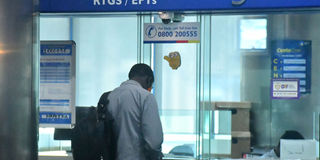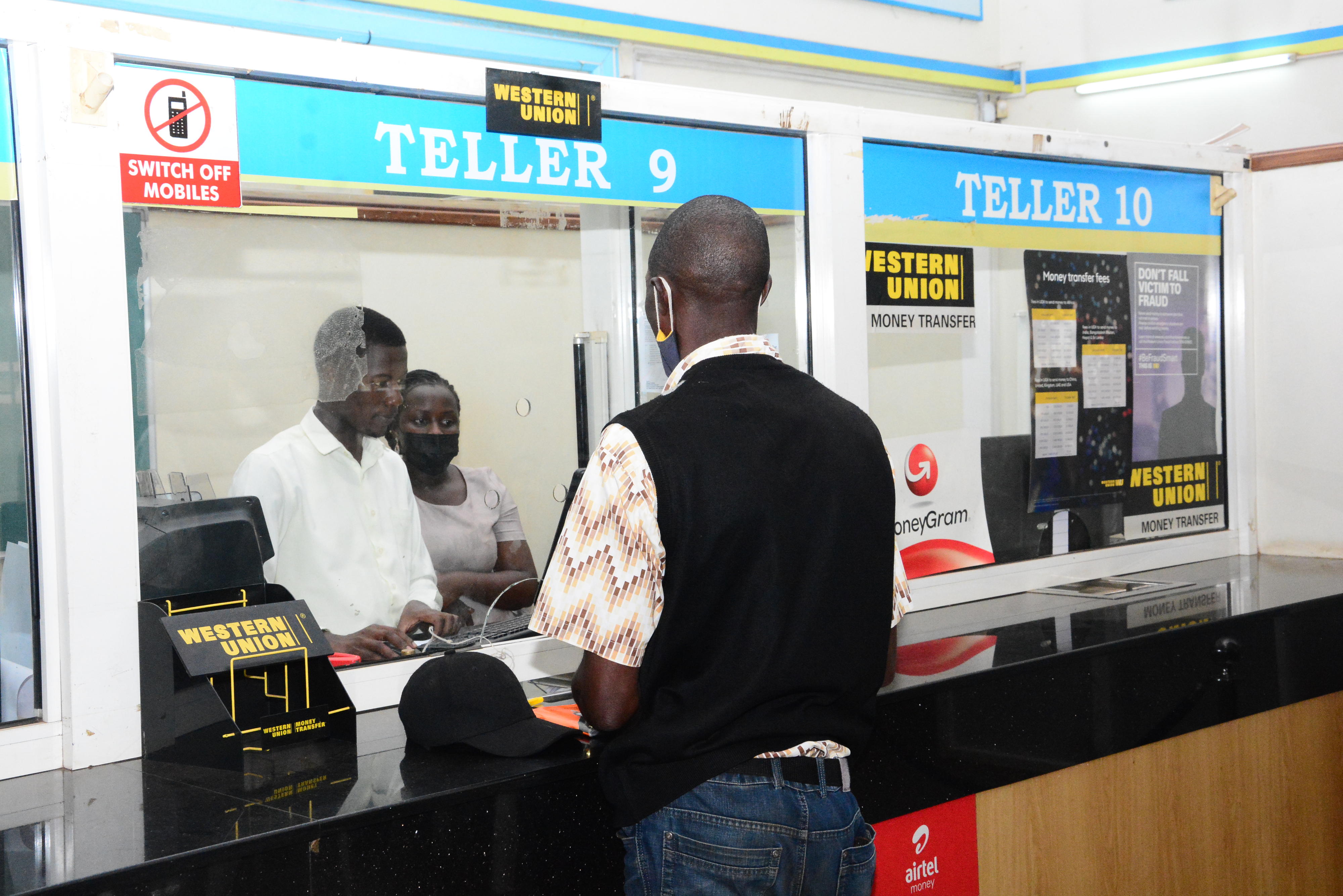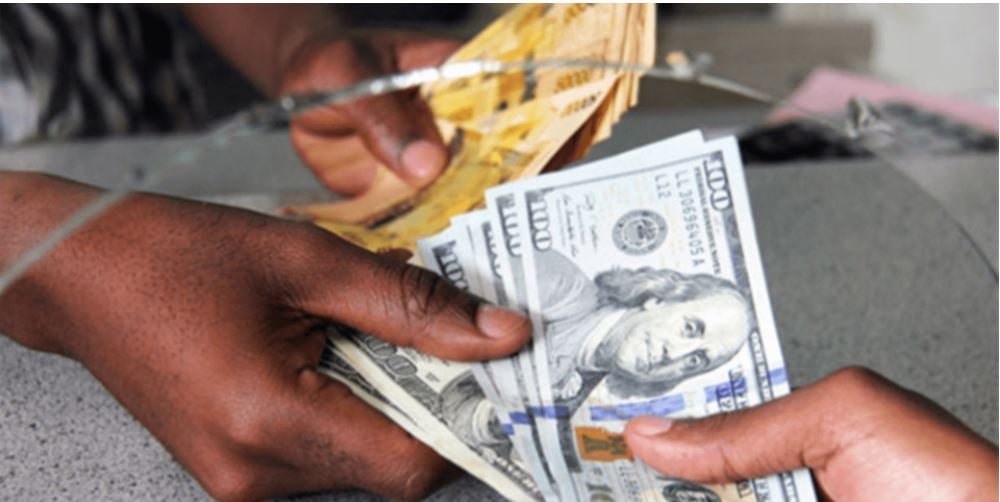Bad loans predicted to rise

A man completes a transaction in a banking hall. Non Performing Loans could increase in the near future. PHOTO/ EDGAR R. BATTE
What you need to know:
Although NPLs are yet to reach highs of 10 percent last seen in 2017, that is where the situation is likely headed as the economy slows and Bank of Uganda responds to inflationary pressures by raising the Central Bank Rate, Daily Monitor writes.
Although NPLs are yet to reach highs of 10 percent last seen in 2017, that is where the situation is likely headed as the economy slows and Bank of Uganda responds to inflationary pressures by raising the Central Bank Rate, Daily Monitor writes.
Since the turn of 2022, flip a newspaper in the classified section and what will be noticeable is property being advertised for auctioning. Several of these have defaulted on their loans and the banks are taking action to recover their borrowed funds.
On September 5, President Museveni wrote to the Prime Minister requesting that a government institution acquires 50 acres of land belonging to Geoffrey Rugazoora. Rugazoora’s company, MOGAS operates fuelstations in Uganda, Kenya and Tanzania. Since 2019, the company debt had ballooned to nearly Shs50b and the cracks begun to emerge.
The defaults started and since then, the lender, Stanbic Bank has been seeking to recover the money using legal means. This is still an ongoing case in Uganda’s courts that have largely been flexible with Mogas to find the money to at least get the bank loan with Stanbic back to performance levels.
In September, Twaweza a Non-Governmental Organisation, Uganda Revenue Authority (URA) and Tax Justice Alliance Uganda released a report highlighting that at least 55 percent of businesses opened in the five years prior to the Covid19 lockdown in 2020, had closed shop. The reasons range from low business environment, lack of capital, the effects of Covid-19 and the high cost of inputs.
The state of the economy since Covid-19 restrictions came into play has broadly affected business, with potential recovery in 2022 hit by the Russia-Ukraine war influence on global commodity prices and the supply chain disruptions as the world opened up from the Covid-19 lockdowns. Uganda has not been spared.
On top of auctioneers placing properties up for sale over non-payment of loans, there are several disputes in the commercial court as borrowers try to save their properties from the hammer. These are indicators of loans going bad. By the time a bank puts up a property for sale, the borrower has failed to meet obligations.
Rising Non Performing Loans
According to the Financial Institution Act (2016), when a borrower fails to pay interest or principle on a loan for a period of at least 90 days or more, banks are required to classify this as a Non Performing Loan (NPL). In Bank of Uganda’s (BoU) Financial Stability Review for quarter ended June 2022, NPLs to total gross loans in commercial banks were 5.3percent, lower than the 5.72 percent in the quarter to March 2022. This reduction is bound to edge upwards.
“However, NPLs could increase in the near term due to the slowdown in economic growth coupled with rising lending rates. Moreover, the reduction in the banks’ NPLs was partly attributed to write-offs of bad loans…,” the financial stability report reads.
With the total stock of private sector credit being Shs18.6 trillion at the end of June 2022, at least Shs1 trillion of those loans are NPLs. Even though the NPLs are yet to reach highs of 10 percent last seen in 2017, that is where the situation is likely headed as the economy slows and the BoU responds to inflationary pressures by raising the Central Bank Rate (CBR).
For banks, NPLs are expensive because they reduce potential income. But they also come at a cost. Banks are expected to make provisions from their income to cover for the “loss” due to an NPL.
By the end of June 2022, at least 43 percent of provisions by banks are meant to cover for the NPLs.
To understand the trend in NPLs, a broader look at the bank performance in 2021 indicates that at least 10 percent year-on-year growth from 2020.
For some banks, they had double digit NPLs to their total loan ratios, indicating the effects of Covid-19 restrictions were affecting customers whereas others have had historical challenges with borrowers.
At the end of 2021, Tropical Bank had at least 31 percent of its total loans classified as NPLs, Dfcu 18 percent, Ecobank 15.3 percent, Absa 15 percent and NCBA 10 percent. The rest of the banks were below 10 percent.
By end of June 2022 banks are not obliged to publish their financial results for the half-year. However, for dfcu, Stanbic, Baroda, I&M, and Diamond Trust Bank, there is an indication that NPLs could be higher than in 2021.
Stanbic disclosed 3.9 percent NPL to loan ratio in the first six-months of 2022, which is almost the 4 percent ratio it had at the end of 2021. I&M Bank had a ratio of 4.4 percent, with the other banks not disclosing the figure.
It could get worse
In September 2022, the final Credit Relief Measures (CRM) put in place by BoU expired. The measures allowed commercial banks to restructure customer loans to cushion them against paying interest during the Covid-19 lockdown.
By the end of June 2022, BoU estimates that Shs2.2 trillion worth of loans under the CRM had been restructured, representing 11.5 percent of gross loans. The amount has been dropping significantly from the Shs6 trillion in September 2020. As the measures have expired, banks have to deal with defaults, since customers can’t restructure under the Covid-19 CRM arrangement. This is potential breeding ground for NPLs.
“However, asset quality of loans still under CRM remains a concern, though the value of past CRM loans reduced from Shs1.04 trillion to Shs978.2billion over the quarter ended June 2022, reducing the ratio due to restructured loans to gross loans from 5.7 percent to 5.1 percent.
Notably though, this ratio has persisted for over one year and portends permanent impairment due to the impact of the pandemic, suggestive of a further increase in NPLs in future,” the stability review to June 2022 reads.
To cushion banks against potential challenges that could erode capital, BoU established the Emergency Liquidity Assistance (ELA) where banks can access lower interest funds to meet financing needs of customers.
Within boardrooms, bankers are concerned about the potential surge in NPLs by end of 2022 in part due to the state of the economy. The optimism of January 2022 when the economy reopened presented opportunities for growth and increased credit uptake but this has all vanished.




